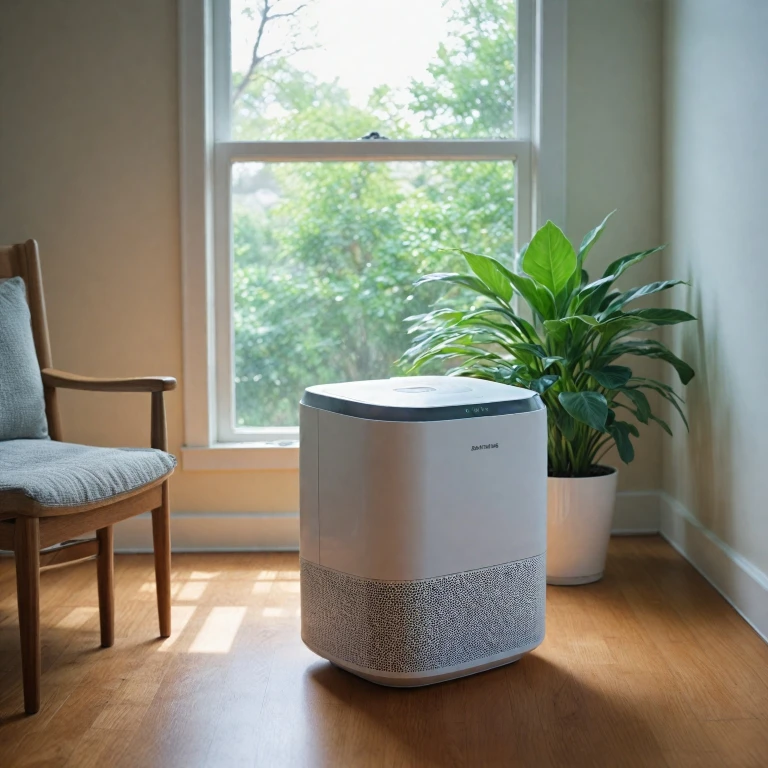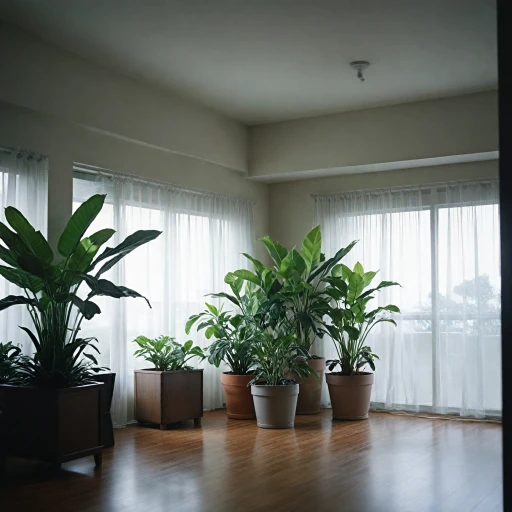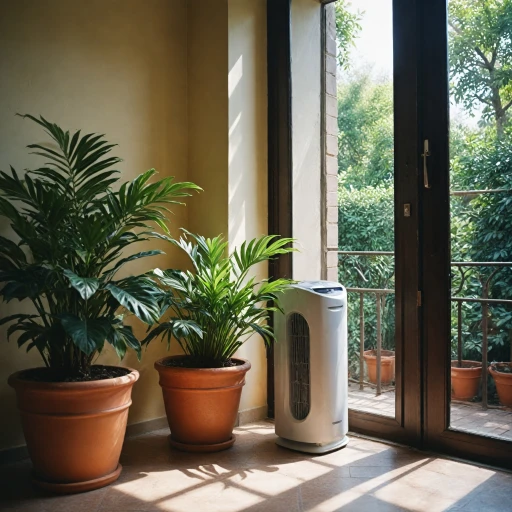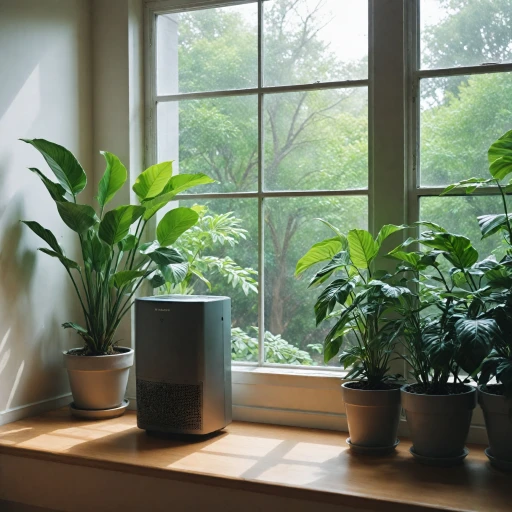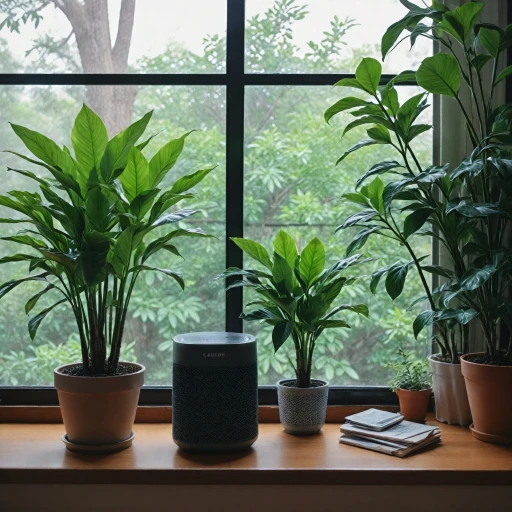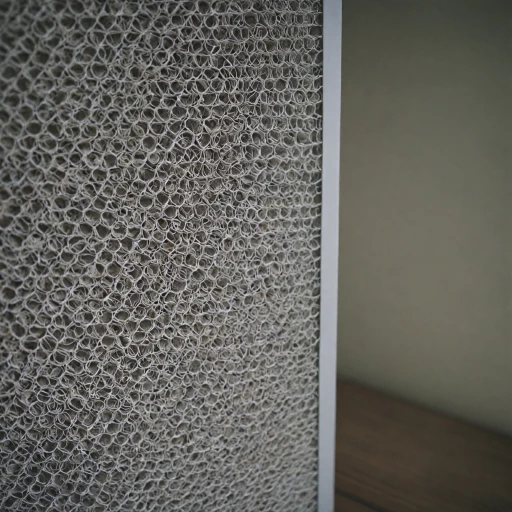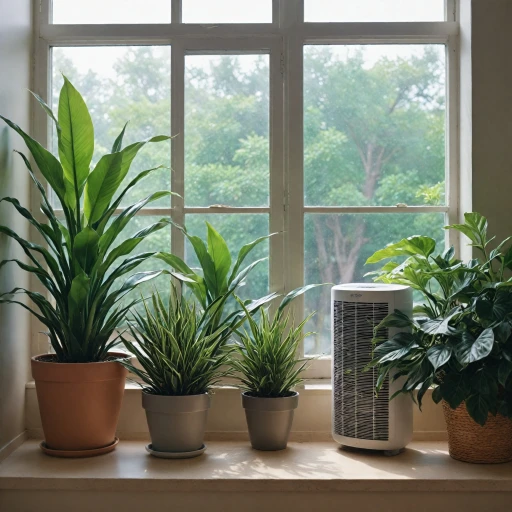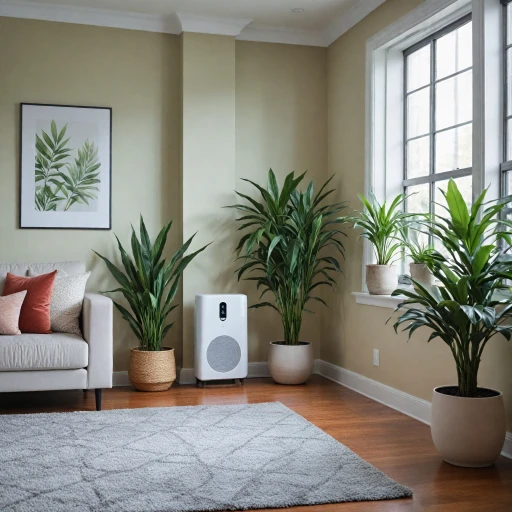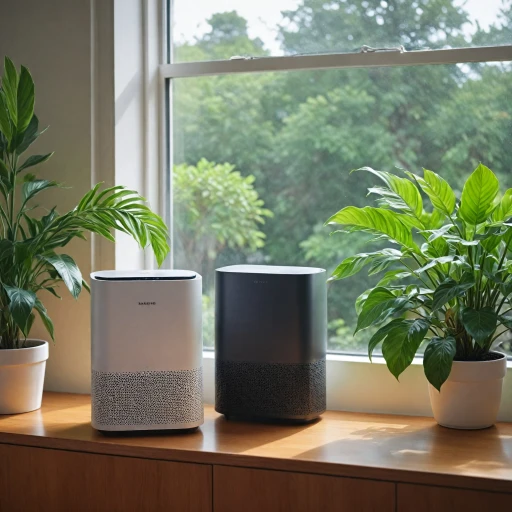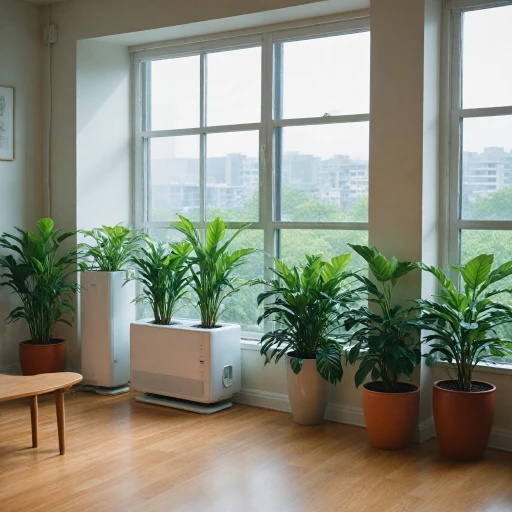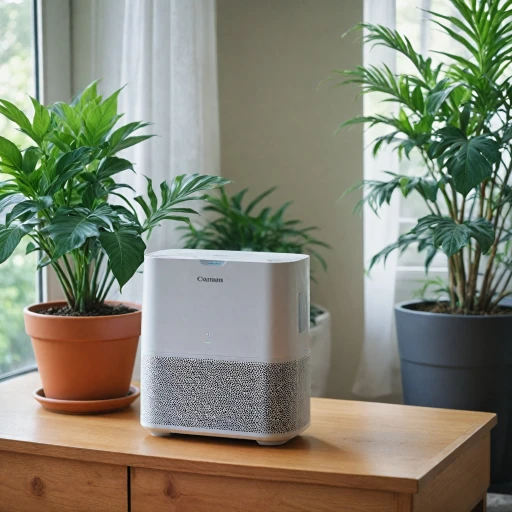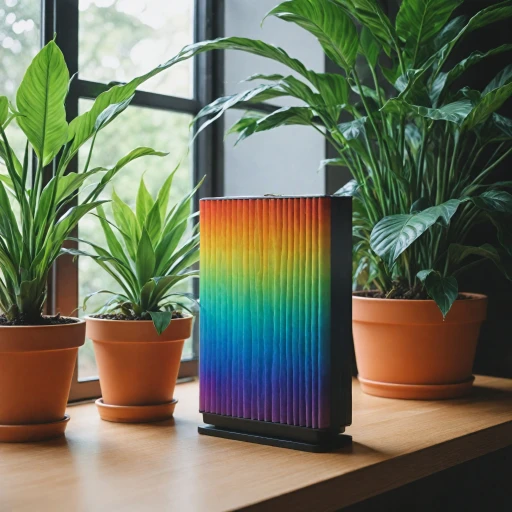
What Are ULPA Air Purifiers?
Unraveling the Complexity of ULPA Air Purifiers
If you're venturing into the world of air purification, ULPA air purifiers might have caught your eye. Known for their unrivaled efficiency, ULPA (Ultra-Low Penetration Air) filters stand out in the realm of air cleaners. But what exactly sets them apart? To start, ULPA filters excel in trapping even the tiniest airborne particles, often as small as 0.12 micrometers. This makes them an exceptional tool for enhancing indoor air quality in both residential and commercial settings. They harness a sophisticated filtration process that captures over 99.999% of airborne particles that float around in the indoor air, ensuring the air you breathe is free of ultrafine particles that regular air filters might miss. The significance of ULPA filtration can't be overstated, especially when compared to more common HEPA filters, which capture particles at 0.3 micrometers with around 99.97% efficiency. This heightened level of filtration is particularly vital in settings where air quality is paramount, such as in hospitals or laboratories, but its benefits extend to homes and offices as well. For those keen on investing in top-tier air cleaning devices, the price of ULPA air purifiers can often reflect their advanced capabilities. However, with a range of options available at different price points, from the regular price to sale price, there's potential to fit them into various budgets. In conjunction with advanced technologies, such as PCO (Photocatalytic Oxidation), these air purifiers not only filter but also break down harmful organic compounds, offering comprehensive air purification. This combination of ULPA and additional technologies ensures that not only physical particles but also volatile gas compounds are effectively removed, enhancing the benefits of using these devices. Before making a purchase, understanding the difference between various filtration systems—HEPA, ULPA, and activated carbon filters, amongst others—will help make an informed decision for the best indoor air solution for your needs. For those exploring whole-house solutions, consider systems that integrate ULPA filtration for maximum efficiency. Learn more about enhancing indoor air quality with advanced filtration techniques here.The Role of PCO Technology in Air Purification
The Power of Photocatalytic Oxidation
Photocatalytic Oxidation (PCO) technology is rapidly making a name for itself in the realm of air purifiers, thanks to its unique ability to significantly enhance indoor air quality. It operates by utilizing a catalyst, often coated with titanium dioxide, which, when exposed to ultraviolet (UV) light, initiates a chemical reaction. This reaction effectively breaks down airborne particles and pollutants into harmless components such as carbon dioxide and water vapor.
The PCO process is distinct from traditional air cleaning methods as it does not merely trap particles. Instead, it transforms harmful substances, ensuring they cannot be re-released into the air. This capability is particularly valuable in targeting volatile organic compounds (VOCs), bacteria, and other microorganisms that standard air filters might miss. PCO technology complements ULPA filters by addressing the gaps left by traditional filtration, ultimately leading to improved air cleanliness.
Moreover, while the PCO component handles gases and microscopic particles, ULPA filters focus on capturing the larger particles, achieving a comprehensive purification process. Such a combination ensures significant improvement in indoor air quality, providing peace of mind when it comes to health and safety.
As with any advanced technology, understanding its role is crucial for potential buyers to make informed decisions. When considering an air cleanser that employs PCO technology, one must assess their specific filtration needs to ensure they achieve the desired air purity in their homes or workspaces.
Benefits of Combining ULPA and PCO
The Power of Combining Two Advanced Technologies
When ULPA air purifiers are equipped with PCO technology, they become formidable devices in the realm of air cleaning. This integration results in cleaning systems that tackle indoor air quality problems from multiple angles, offering a blend of physical filtration and chemical reactions to achieve high efficiency.- Enhanced Filtration: The combination allows the purifier to excel in removing particles, especially ultra-fine ones. ULPA filters (Ultra-Low Penetration Air filters) already outperform HEPA filters by trapping 99.999% of particles as small as 0.1 microns, and adding PCO gives an added layer of chemical filtration to remove airborne pollutants.
- Superior Air Cleaning: The dual approach captures a wide range of contaminants. While the ULPA filter takes care of dust, pollen, and other particulates, the PCO technology targets and helps remove volatile organic compounds (VOCs), bacteria, and viruses.
- Efficiency Over Time: Regular air filters can get clogged over time, potentially impacting performance and air flow. The inclusion of PCO technology prolongs the lifespan of the physical filter by reducing the overall buildup of pollutants, which means a more consistent air purification performance over longer periods.
- Cost Considerations: While the upfront price USD for combining these technologies may be higher compared to a single-feature air purifier, the benefits in terms of comprehensive air cleaning efficiency, potentially lower maintenance costs, and improved indoor air wellness can make it a worthwhile investment.
Choosing the Right ULPA Air Purifier with PCO
Selecting an Effective Air Purifier
When choosing the right ULPA air purifier with PCO technology, various elements should be considered to ensure the device meets your specific indoor air quality needs.- Understand the Environment: Determine the size of the area you need the air cleaner for. Larger areas may require purifiers with higher efficiency and larger capacities to filter more particles effectively.
- Efficiency Ratings: Check the purifier's efficiency in removing airborne particles. While ULPA filters are known for their high particle removal rate, make sure the PCO technology integrated into the purifier is equally efficient in breaking down pollutants.
- Price Considerations: Prices can vary based on filtration capabilities, brand, and additional features. Compare the regular price and sale price to ensure the purifier fits within your budget without compromising on quality.
- Filter System: Evaluate the type of filters used, such as HEPA filters, which are common in many high-efficiency air purifiers. ULPA and PCO filter combinations provide a comprehensive approach to cleaning indoor air.
- Portability needs: If your usage demands flexibility, portable air purifiers with PCO technology offer a convenient solution for switching locations within your home.
- Air Quality Monitoring: Look for air purifiers that have built-in air quality monitors or indicators to help you understand the current air quality and the device's effectiveness.
Maintenance and Care Tips
Ensuring Longevity and Peak Performance
Maintaining your ULPA air purifier with PCO technology is crucial to ensuring it operates at peak efficiency. Regularly cleaning and maintaining the system not only extends its lifespan but also enhances indoor air quality. Here’s how you can achieve this:
- Regular Filter Checks: Monitor the air filters, such as the HEPA and activated carbon filters, and replace them as recommended by the manufacturer. Not only do these filters capture airborne particles, but they also help improve the overall filtration system efficiency.
- Clean the Pre-Filters: Most air purifiers come with pre-filters that capture large particles. Clean these regularly to prevent blockage and maintain airflow.
- PCO Module Maintenance: Ensure the PCO technology is functioning correctly by checking if the UV-C light is operational. The light is instrumental in breaking down airborne pollutants.
- Inspect Seals and Housings: Examine the unit’s internal and external housings for any wear and tear. Proper seals are crucial for keeping the system airtight and enhancing air purification.
- Monitor System Performance: Keep an eye on the air purifier's performance indicators. Many modern models have digital displays that show when maintenance is required.
By following these simple steps, you can maintain the air purifier’s effectiveness in removing particles and allergens from your indoor air, ensuring a clean and healthy environment. Additionally, consistent maintenance can align with the purifier’s price USD value, enhancing your investment over the unit's life.
Common Misconceptions and FAQs
Demystifying ULPA Air Purifiers with PCO Technology
Many people harbor misconceptions about ULPA air purifiers and PCO technology, especially when it comes to air quality improvements and the efficiency of these systems. Let’s address some common misunderstandings.- ULPA vs. HEPA: While both ULPA and HEPA filters are tremendously efficient in trapping particles, ULPA filters capture even smaller particles than HEPA filters. This means ULPA purifiers provide more thorough indoor air cleaning, which can be crucial for individuals with severe allergies or respiratory issues.
- PCO Technology and Purifier Safety: Some assume that PCO (photocatalytic oxidation) technology used in air purifiers generates harmful byproducts, like ozone. In reality, reputable PCO air cleaner models are designed to operate safely without emitting harmful levels of ozone, prioritizing the safety and health of users.
- High Efficiency Equals High Cost: There's a belief that highly efficient air filters, such as those in ULPA purifiers, always come with a prohibitive price tag. However, many units offer a balance between performance and price, ensuring a range of options are available, from regular price to sale price, to fit various budgets.
- Diverse Applications: ULPA purifiers are not only limited to professional settings. They can be used effectively at home to remove airborne particles, improving indoor air quality significantly. Their application expands beyond mere purifiers to encompass a range of air cleaning devices tailored for both personal and professional environments.
- Maintenance Misunderstandings: Some users shy away from ULPA and PCO systems due to fears about complicated maintenance routines. However, with proper care tips, these systems can operate effectively without undue burden. Regular cleaning and timely filter replacements are simple steps that ensure peak performance for most air cleaners.
